The Hodgson Clan
Where all things Hodgson come together...
The Creation of England AD 829 - 1157
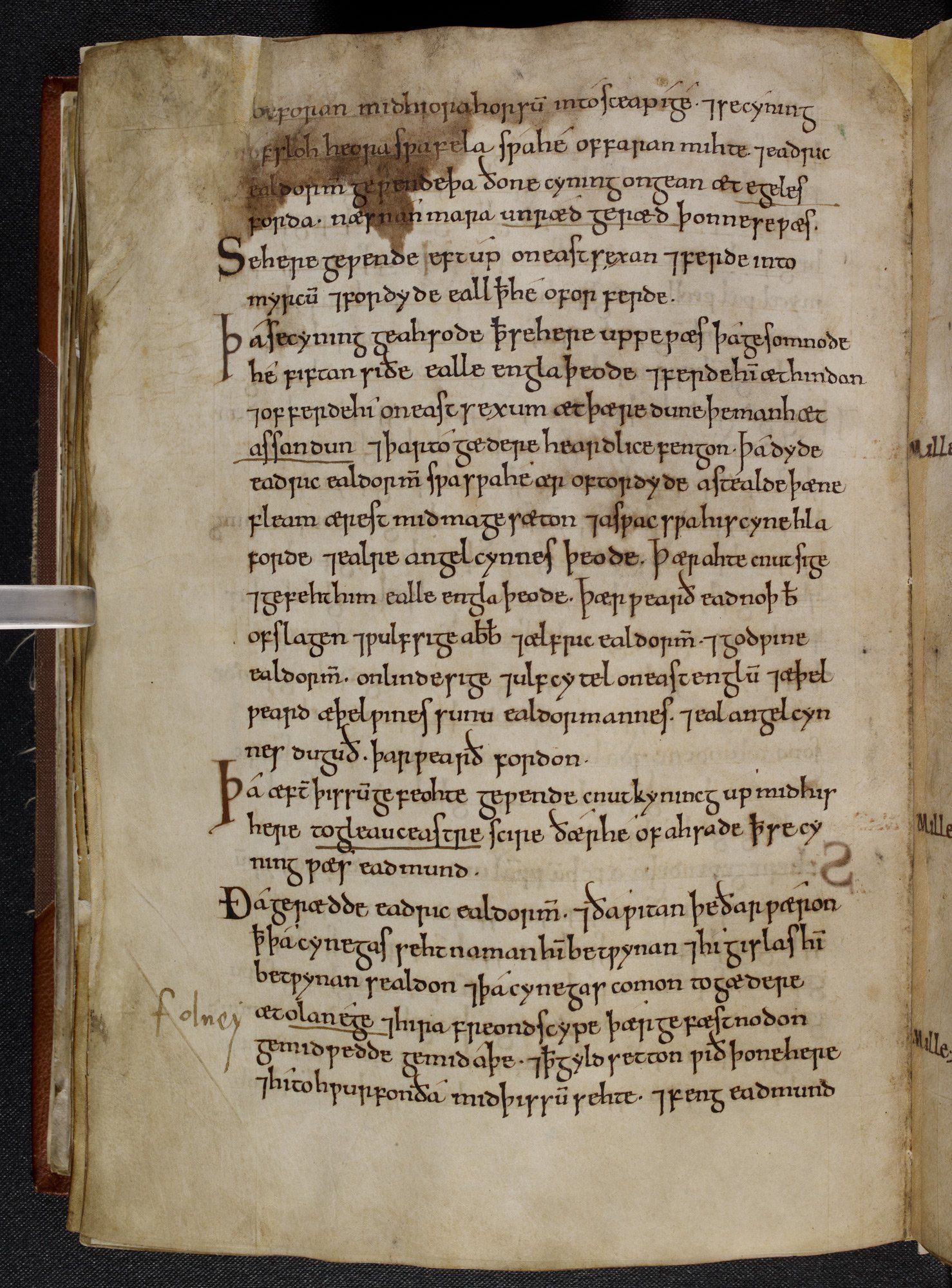
Excerpt from the Anglo-Saxon Chronicle, 'Manuscript C', the third oldest surviving copy of the chronicle. It is traditionally thought to have been produced at Abingdon Abbey in the mid-1040s, with continuations into the mid-1060s. The manuscript breaks off in the middle of the events of 1066, as if a process of composition or copying had been interrupted.
Source: https://www.bl.uk/anglo-saxons/articles/how-was-the-kingdom-of-england-formed
The maps below show the show the changing political map in Britain from AD 829 to AD 1157. In this period the modern territories of England, Scotland and Wales were created. The boundaries between them have since changed only slightly. Note that the main aim here is to show political territories, rather than the pattern of cultural and ethnic settlement. However, some areas of Norse settlement are indicated where they were largely autonomous and less subject to another political authority. The pattern of Norse and Danish cultural settlement in the North of England in the eleventh century is shown on another map on this site.
The Anglo-Saxons arrived on the eastern and southern coasts in large numbers in the sixth and seventh centuries. The Viking invasions started in AD 865, when Danes arrived on the east coast and established settlements. Norse colonised places on the west coast of Britain from AD 902. The Anglo-Saxon Kingdom of Northumbria was defeated by the Viking invaders and forced to pay homage to the Danish Kingdom of York. The Anglo-Saxon kingdoms of Mercia and Wessex remained. To the west were Celtic kingdoms in Wales and Strathclyde.
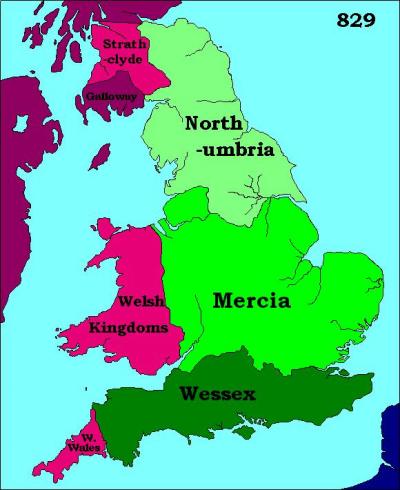
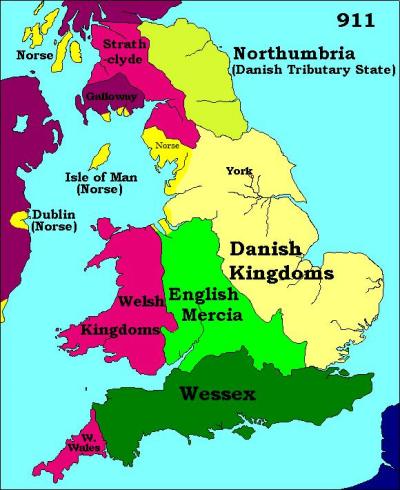
In AD 918 the Irish-Norse under Ragnall took control of the Danish Kingdom of York. Subsequently the Strathclyde Britons entered into an alliance with the Irish-Norse in Cumberland. The Norse held York until AD 927 and from AD 939-54.
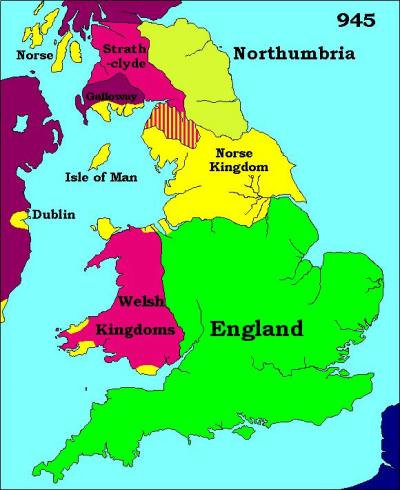
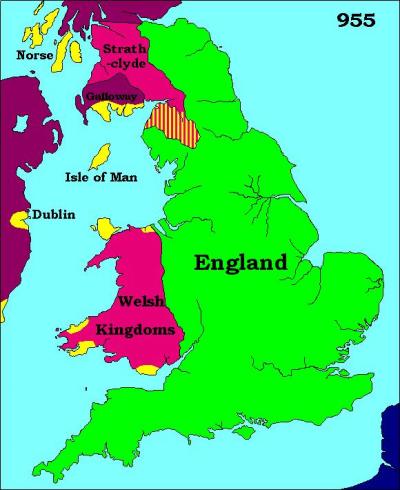
After his victory over the Anglo-Saxons in the battle of Ashdon in Essex in 1016, the Danish King Canute became the ruler of a united England. He and his sons ruled until 1042, when England returned to Anglo-Saxon control. The Normans invaders arrived on the south coast of England in 1066. They did not take Carlisle and Cumberland until 1092.
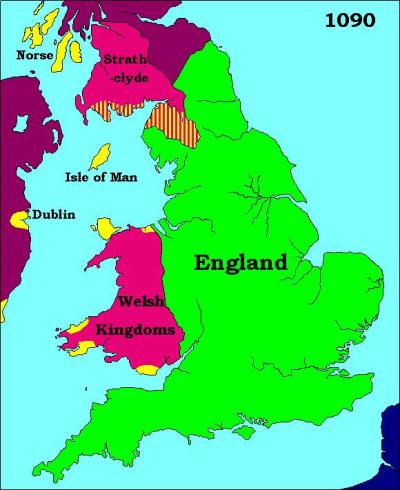
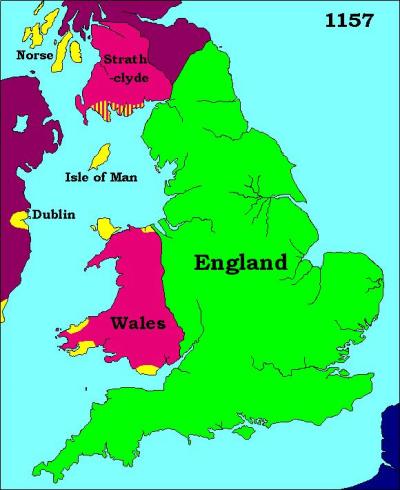
The unification of England in this period did not mean that the English subjects all began to speak the same language. The English population was a motley collection of different cultural, ethnic and linguistic groups, as a result of multiple invasions over the preceding centuries. The Norman aristocracy continued to speak Norman French for some time. Forms of Norse and Danish persisted in the areas of former Viking settlement until the thirteenth century (Bugge 1921). Celtic languages persisted in Wales and Strathclyde. But Celtic speakers were also found in parts of England such as the Fens (Gray 1911). English regional dialects were very different from each other. It was much later that a common English language began to emerge.
For a web archive of information on the changing county names and boundaries in England click HERE.
For historic maps of Europe since Roman times click HERE.
Bibliography
Bugge, Alexander (1921) ‘The Norse Settlements in the British Islands’, Transactions of the Royal Historical Society, 4th Series, Vol. 4, pp. 173-210.
Falkus, Malcolm and Gillingham, John (eds) (1981) Historical Atlas of Britain (London: Grisewood and Dempsey).
Gray, Arthur (1911) ‘On the Late Survival of a Celtic Population in East Anglia’, Proceedings of the Cambridge Antiquarian Society, 15, pp. 42-52.
Moore, R. L. (ed.) (1981) The Hamlyn Historical Atlas (London: Hamlyn).
Treharne, R. F. and Fullard, Harold (eds) (1963) Muir’s Historical Atlas: Ancient and Classical, sixth edition (London: George Philip).